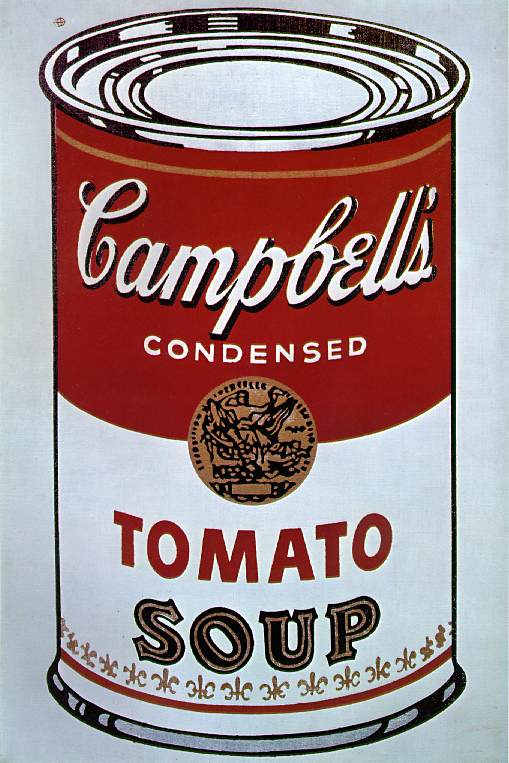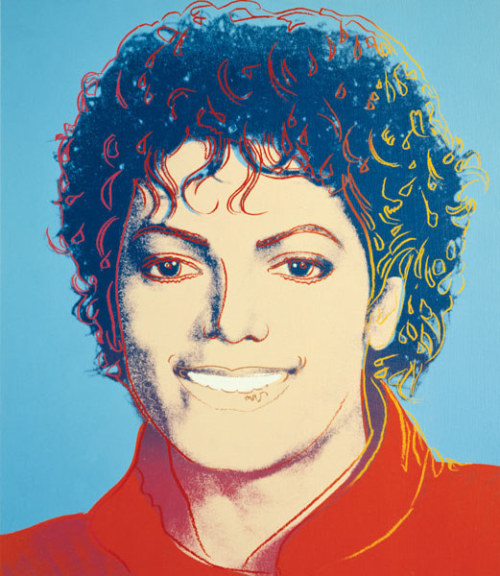Warhol was born and raised in Pittsburgh, Pennsylvania. His parents were working-class Lemko immigrants. In the third grade, Warhol developed the nervous system disease chorea. This was an event that strongly influenced his personality, and likely contributed to what the public later in his life regarded as eccentricities. The disease turned him into a hypochondriac, and from that point on he had powerful phobias concerning hospitals and doctors. Often bedridden, he was considered an outcast among his classmates, spent most of his time with his mother. This is the time in his life that he started to explore art - often spending his bedridden hours drawing, listening to the radio, and collecting pictures of movie stars.
Although he started exhibiting his artwork in his 20's, it wasn't until the 1960's that he began to paint the iconic images we still remember today of dollar bills, Coca-Cola bottles, and Campbell's Soup cans, as well as famous celebrities of the time, like Marilyn Monroe and Elvis. It was during this time that he founded his studio, "The Factory", and became a popular and controversial figure in the art industry. Aside from his paintings and silk-screening, he also became well known for his film making.
Warhol used techniques that were uncommon in the art world during his time. Although he began his career as being just a painter, he quickly started making use of silkscreening and printmaking. Otherwise, his extensive use of repetition would be impossible. He often combined painting and photography, by painting canvases that were silk screened with an image. Although he sometimes used his own photography, he also often used famous photographs that belonged to other photographers.
One of Andy Warhol’s most iconic art pieces is “Campbell’s
Soup Cans”. It was created in 1962, and the piece consist of 32 canvases, each
one 20 by 16 inches. Each canvas depicts a campbell’s soup can. There are 32
canvases because each separate soup can features the label of each of the 32
flavors campbell’s offered at the time. It was produced by printmaking. When asked about the piece, Warhol said, "I
used to drink it. I used to have the same lunch every day, for twenty years, I
guess, the same thing over and over again."
The production of the Campbell's Soup can-themed works underwent 3 distinct phases. The first took place in 1962, during which he created
realistic images, and produced numerous pencil drawings of the subject.
In 1965, Warhol revisited the imagery of the soup cans by replacing the original
red and white colors with other arbitrary hues. In the late 1970s, he
returned to the soup cans once again - this time inverting and reversing the images.
There has been some debate over the intended message of “Campbell’s
Soup Cans”. A common interpretation is that it was meant to be a critique of
American consumerism. This message was especially embraced in Europe, where the
work was assumed to have a Marxist message. In actuality, Andy Warhol was
apolitical. In fact, he had a very positive view of American culture. A more
likely interpretation of “Campbell’s Soup Cans” is that it was meant to
juxtapose the art movement of abstract expressionism by embracing ordinary, everyday
modern culture.
However, the apparent intended message behind “Campbell’s
Soup Cans” is best described by Warhol himself in his famous quote, ". . .
a group of painters have come to the common conclusion that the most banal and
even vulgar trappings of modern civilization can, when transposed to canvas,
become Art.” It seems to be that Warhol
intended for “Campbell’s Soup Cans” to be completely devoid of social or
emotional commentary, taking the theory that it was meant to showcase ordinary culture
one step further.
Another iconic work of Warhol’s is “Marilyn Diptych”. It was
created via silkscreen in 1962, during the weeks following Marilyn Monroe’s
death. It contains 50 images of Marilyn, which are based off of a famous
photograph of her from the 50’s, and the entire thing is 80.88 in
× 114.00 inches. The twenty-five pictures on the left side of the
piece are brightly colored, while the twenty-five on the right are in black and
white.
The most common interpretation of the piece is that it is a commentary
of the life and death of celebrities. The colorful half of the diptych likely
represents Marilyn’s life, while the black and white half represents her death.
The images that make up the black and white side gradually become more and more
faded, until the images in the last row are nearly half gone. This likely
represents what Warhol suspected would happen to Marilyn Monroe after her death
– that she would fade out and be forgotten.
Here is more of Warhol's work:
A Velvet Revolver cover done by Warhol.







If u want to see some of Warhol's work there is a restaurant called Casa Lever on 53 n park that has a few on their walls.
ReplyDelete